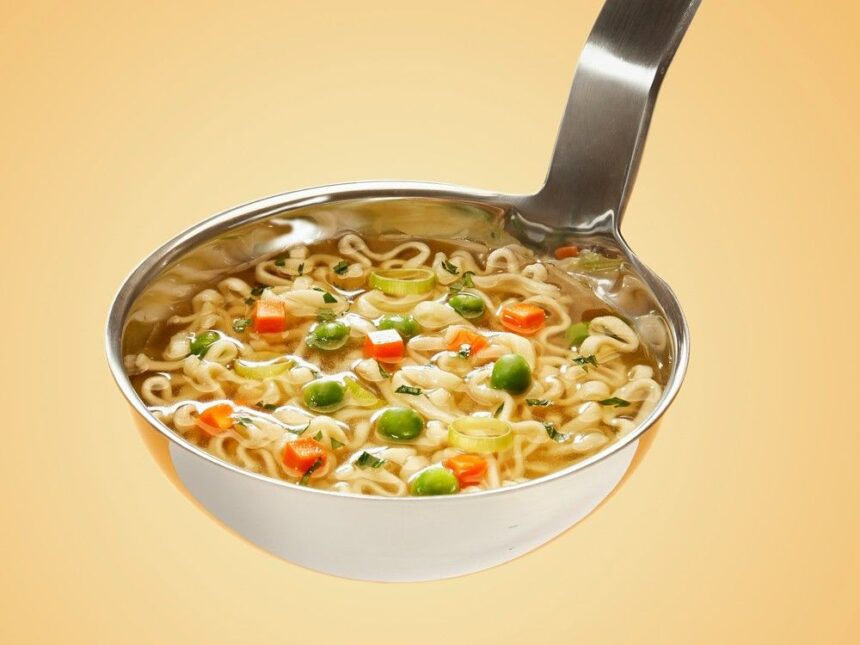Nova Scotia dietician Catherine Morley says questions about how and what to feed people who are sick prompted her to study it furtherPublished Jul 23, 2025Last updated 52 minutes ago7 minute readFeeding someone living with changed health status feels hard because it is, says Catherine Morley. ContributedArticle contentThere are plenty of challenges when it comes to feeding someone living with changed health status, including those who are nearing the end of life. It affects the everyday, taken-for-granted acts of eating and feeding.THIS CONTENT IS RESERVED FOR SUBSCRIBERS ONLY.Subscribe now to access this story and more:Unlimited access to the website and appExclusive access to premium content, newsletters and podcastsFull access to the e-Edition app, an electronic replica of the print edition that you can share, download and comment onEnjoy insights and behind-the-scenes analysis from our award-winning journalistsSupport local journalists and the next generation of journalistsSUBSCRIBE TO UNLOCK MORE ARTICLES.Subscribe or sign in to your account to continue your reading experience.Unlimited access to the website and appExclusive access to premium content, newsletters and podcastsFull access to the e-Edition app, an electronic replica of the print edition that you can share, download and comment onEnjoy insights and behind-the-scenes analysis from our award-winning journalistsSupport local journalists and the next generation of journalistsRegister to unlock more articles.Create an account or sign in to continue your reading experience.Access additional stories every monthShare your thoughts and join the conversation in our commenting communityGet email updates from your favourite authorsSign In or Create an AccountorArticle contentWhat and how one eats when living with illness or when preparing food for someone who is sick is often one of the only ways you can feel some control in situations where many things are out of one’s control.Article contentArticle contentArticle contentThat, in itself, is sufficient to produce anxiety, says Catherine Morley.Article contentThe Hantsport, N.S., woman knows all about this, both professionally and personally. Morley has been registered as a dietitian for 43 years and has worked in clinical settings as a dietitian and clinical manager as well as in public health as a consultant in a nutrition and dietetics education program development and evaluation. She’s also a university professor for the School of Nutrition and Dietetics at Acadia University.Article content Catherine Morley has worked as a registered as a dietitian for 43 years. ContributedArticle content‘Tell me what to eat’Article contentThe idea of how to feed someone who is sick was the focus of her doctoral research. It was an area of study that came about because, while working as a clinical dietician, she’d often get questions during nutrition counselling.Article contentFor example, she says, someone would tell her, “I have lung cancer; you tell me what to eat, I’ll do that, and God will reward me by getting rid of my tumour. If that doesn’t work, at least I’ll go to heaven when I die.”Article contentArticle contentMorley, trained in the biology of nutrition, wanted to better understand what people meant so she would be better informed to provide nutrition counselling.Article contentArticle contentThat’s when she learned about the multiple and sometimes contradictory meanings of eating that inform every bite or sip we take.Article content“We don’t tend to recognize how powerful these are until something happens to disrupt daily life, including changes in our own health status or in someone close to us,” she says.Article contentAs a doctoral student, Morley noticed there were no publications on eating when living with life-changing illness. While there are many books on living with illness, eating and feeding challenges are minimally included, if at all.Article contentThere are also numerous cookbooks for people living with chronic conditions, but these do not address the complexity of relationships with and through food, she notes.Article contentTwo of Morley’s brothers have died, so she’s experienced eating and feeding challenges as part of the circles of care.Article contentShe noticed the focus of care and support tends toward the person experiencing the illness, not how the caregiver is managing to feed their person.Article contentCreating a guideArticle contentThese experiences, combined with her background, led to her publishing “No Love Like It: Feeding Someone Who is Sick” with FriesenPress earlier this year.Article contentMorley wanted to provide caregivers with an understanding of why feeding someone who is sick feels so difficult, to let them know they are not alone, and to support them as they determine courses of action for themselves and the people they are caring for.Article contentThe book, she says, is written for two audiences: for caregivers and those in circles of care, and for people who work in health and human services.Article contentArticle contentIt is a hybrid of research findings, memoir, research participants’ stories, and creative writing, she explains.Article content Catherine Morley helps to take away the stress and anxiety of feeding someone who is sick through her book, ‘No Love Like It.’ ContributedArticle contentThings to consider when feeding someone who is sickArticle contentSome of Morley’s top advice and things to keep in mind for feeding someone who is sick includes:Article content1. Feeding someone living with changed health status feels hard because it is.Article content2. Offering and receiving/consuming food are laden with meaning.Article contentOffering means “you can trust me, I am not giving you something that will hurt you” and “by eating this, you will go on living.”Article contentEating food that is offered means that the person will be putting something into their bodies, which is a supreme act of trust. The term ‘incorporation’ in French is the perfect descriptor of what happens: “I am putting this substance into my body (mon corp, en francais) and it will become me,” which Morley says is profound.Article contentArticle content3. When someone cannot participate in receiving and eating what is offered, there is upset on both sides. These feelings are complex.Article content4. There are 4Rs of feeding and eating (roles; responsibilities; routines/rituals; relationships).Article contentRoles: Someone in a household is the feeder (who does all or the majority of the food work). Sometimes this role is shared; most often, it falls to the cis-female head of household. Those who are not the feeder are household members.Article contentResponsibilities: The feeder is responsible for getting food into the household, storage, preparation, serving, organizing compost, trash, and recycling set-ups. Others may help with clean up. Household members show up and eat.Article contentRoutines: The day-to-day activities that everyone in a household knows as ‘how we eat in our house’ — what is eaten, what time, where eating takes place, dishes and utensils used, and so on. Rituals can differ, for example, in who hosts holidays and how they are celebrated.Article contentRelationships with and through food: A person’s own relationships with food are heavily laden with meaning. We see this in phrases such as “I am trying to be good and eat vegetables” or “I was really bad and had a Nanaimo bar,” Morley says.Article content5. The 4Rs are disrupted when someone’s health status changes. This can extend beyond the household. Nothing about eating and feeding for individuals and in households is the same as it once was.Article content6. When someone is approaching the end of life, eating slows down and eventually stops. This is a natural phenomenon as the body starts to slow down normal physiology. It can be (and usually is) distressing for people in the circle of care. Very often, food is forced on the person who is dying in the hopes of the food making them well again or that they will live a bit longer.Article content“Having food disrupts the natural dying process and can result in worsening or prolonging of symptoms,” explains Morley.Article contentArticle content The idea of how to feed someone who is sick was the focus of Catherine Morley’s doctoral research. ContributedArticle contentWhat to believe?Article contentIn a world of social media and misinformation, it can often be difficult to know who or what to believe.Article contentTo combat this, Morley encourages people to think of who is making money from a food or nutrition claim, and whether the promoters are preying on fears that can include illness, death, and sadly, or body size/weight.Article contentConsider also what this person or group is expecting you to do, she says. If the expected behaviours are disruptive to multiple aspects of a person’s life and relationships, they should consider if it is the best course of action for them.Article content“Eating right” or “healthy eating” are examples of ambiguous language that imply a morally or scientifically based correct way to nourish oneself and others, says Morley.Article contentInstead, she encourages people to consider the interplay between eating/feeding beliefs and behaviours.Article contentArticle content“When one is out of balance, we aim to regain balance by altering either the belief or the behaviour,” she says.Article contentEducate yourselfArticle contentMorley suggests that if people are wondering whether a promoted food or diet is potentially advantageous to them, they should learn about human digestion and physiology — even a very basic description of the function of the parts of the digestive tract — and about food.Article contentHow do our bodies actually work to turn food into substances that nourish us?Article contentIncredible chemistry takes place in our bodies. Knowing what food is, where it comes from (farmers’ fields), and how their body digests/absorbs it (or not) would help people decide whether the promoted food or nutrient could possibly have the effect that is claimed, says Morley.Article contentThere are three sources of food: plants, animals, or chemical concoctions. Knowing the source of food can help people distinguish between a food or a way of eating that humans have eaten for millennia or whether the food/nutrition message is something they can safely ignore.Article content“I am wary of the promotion of a single foodstuff as the answer,” she says.Article contentEveryone is differentArticle contentWhat works will be different for everyone, says Morley.Article contentFor example, Morley lives with celiac disease, so what is ideal for her is different then it would be for anyone else.Article content“I am wary of nutrition messages that are meant for everyone as that isn’t compatible with individual biology,” says Morley.Article contentMorley hopes the book will help make the concept of feeding someone else less stressful. By deconstructing the complexities of eating and feeding at normal times, and then how these change with changed health status, she’s hopeing readers will be able to assess their own situations, have a clearer idea about what is happening and why they feel the way they do about food and eating, and make a plan of action to minimize uncertainty.Article contentFor more information, visit cathmorley.com.Article content
How to feed people who are sick











